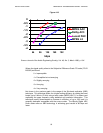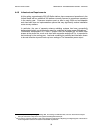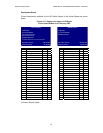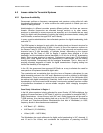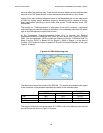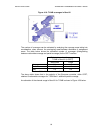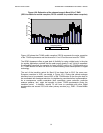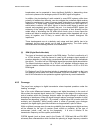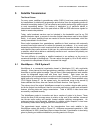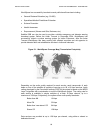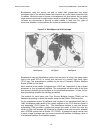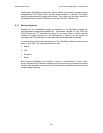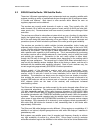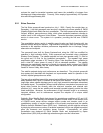DIGITAL RADIO GUIDE TERRESTRIAL TRANSMISSION SYSTEMS - ISSUES
63
broadcasters can be expected to have significant flexibility in determining when
and how to phase out the analogue portion of the IBOC signal all together.
In addition, the simulcasting of audio material in some IBOC systems, while done
primarily to facilitate time diversity, can also mitigate the undesired digital receiver
behaviour experienced in cases of severe signal obstructions or extreme cases of
interference. In these cases, systems without time diversity (such as Eureka 147)
exhibit what is called a "cliff effect" failure, in that the audio signal is perfect one
second, and completely gone ("muted") the next. In a simulcast IBOC system, the
existence of the "backup" analogue signal for purposes of time diversity has the
added effect of eliminating the cliff effect failure mode, since in those cases the
receiver will blend to analogue and the audio program, while degraded, will not go
away all together, and is likely to remain with the listener throughout the
impairment.
These developments are at a relatively early stage and their viability has to be
assessed, but the work carried out to date is encouraging. The audio quality
achievable with simulcasting remains to be established.
(2) DRM (Digital Radio Mondiale)
Two types of simulcast are present in the DRM design. The first is confined to a 9
or 10 kHz channel. Half the channel is used for an analogue signal capable of
envelope detection (in order that a conventional AM radio receiver can demodulate
the signal). The other half is a DRM digital signal that requires digital demodulation.
The second technique requires 18 or 20 kHz of 2 adjacent channels where one
channel contains standard AM and the other contains either a 4.5/5 or 9/10 kHz
DRM signal.
For Regions 2 and 3 the simulcast solution is potentially much simpler as the Long
and Medium Wave bands have been allocated 18/20 KHz channels. In Region 3
the 18 kHZ allocation is also protection against night time sky wave interference.
4.5.3 Coverage
The move from analogue to digital transmission raises important questions under the
heading ”coverage.”
One of the main differences between analogue and digital broadcasts is the mode of
failure when the received signal starts to fail. It happens at the edge of the service area
and at locations within the coverage footprint where the signal strength is affected by
shadowing or interference. When the signal strength reduces, analogue reception is often
described as degrading “gracefully.” By contrast, a digital signal will at some point fail
suddenly and completely. Whilst usually robust in areas of generally poor analogue
reception, the digital signal gives little indication as it approaches a point of failure.
Within a defined coverage area, the service availability from analogue and digital services
will be affected by the type of receiver (fixed, mobile or portable), by the type of
environment (urban, rural), and by the topography. It is also a function of the
transmission frequency and the system performance.
COFDM signals (such as those used in the Eureka 147, DRM and AM and FM IBOC
schemes) have characteristics which facilitate the planning of single frequency networks



